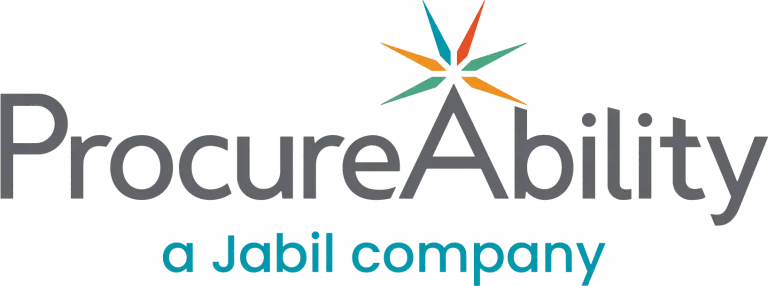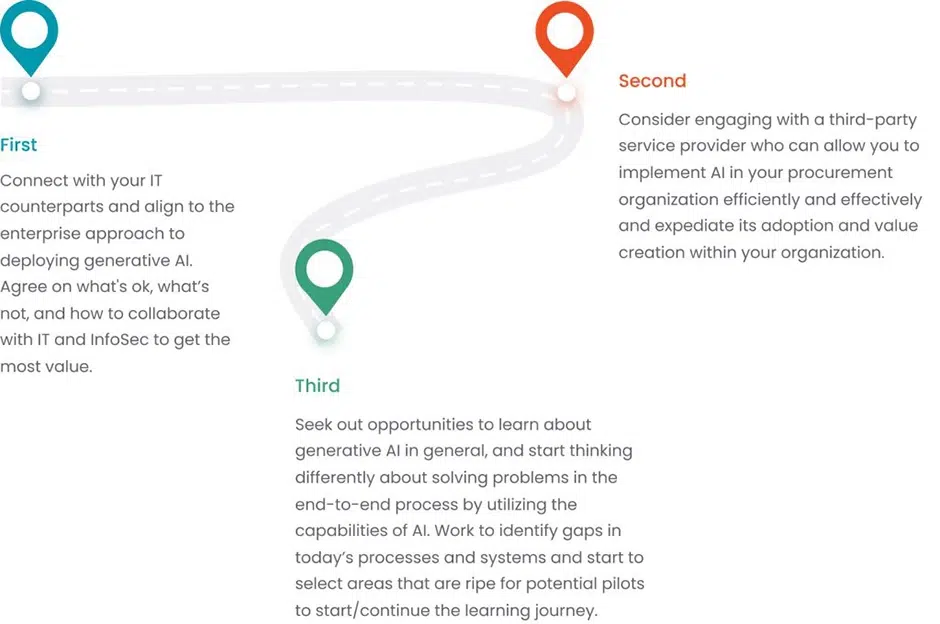The Future of AI in Procurement:
The transformative impact of generative AI

Generative artificial intelligence (AI) is revolutionizing the nature of work across almost every industry, around the globe. We see it in creative work, where large language and image AI models generate automated content. In manufacturing, generative AI augments human-based product design efforts, optimizing key processes, and improving quality control. It’s changing how healthcare is delivered, improving patient outcomes through better diagnosis and information sharing. We have experienced many such use cases as we built tech-enabled procurement organizations for our clients.
To deliver market-leading, AI-enabled solutions to our clients, ProcureAbility partnered with dSilo, a leading AI company – and as we collaborated with many of our clients to understand their future vision for AI, we decided to synthesize our findings to present our co-authored Insights series, “The Future of AI in Procurement”.
In the first installment of this series, “The Transformative Impact of Generative AI,” we explore how AI can connect strategic and tactical procurement processes while significantly reducing manual work.
We examine AI’s transformational potential in procurement and highlight the unique traits that make the industry a prime candidate for AI adoption—on a scale not previously possible.
A function like no other
Procurement faces unique challenges in an organization. Because it sits at the junction between external suppliers and internal functions, it serves as the lynchpin of an ecosystem that provides the goods and services an organization needs to remain competitive.
From an external perspective, supplier engagement can range from a simple purchase of a generic item to a complex, multi-year relationship involving forecasts, engineering drawings, delivery schedules, post-delivery services, warranty claims, and end-of-life management. Meanwhile, internally, procurement must balance short-term budget considerations with long-term planning needs.
On a daily basis, procurement manages a highly variable set of processes to meet the requirements of multiple stakeholders. Consequently, this broad range of responsibilities often leads to a patchwork of systems as professionals strive to satisfy stakeholders, achieve cost savings, and manage risk and compliance.
When we look at the current system landscape, most organizations have implemented a foundational Procure-to-Pay (P2P) system, usually tied to their ERP choice. These systems represent significant investments, especially with the cloud shift over the past decade. Although P2P providers often offer suites of procurement-related modules, these modules are frequently acquired rather than built, so integration can be weak. As a result, organizations add “best-of-breed” solutions to meet specific needs, creating information silos. In many cases, integrating these niche solutions into the foundation isn’t feasible, or the ROI doesn’t justify IT effort.
Bridging the gaps
Enter generative AI, which can help procurement address these challenges in two major ways.
Generative AI can close gaps in the “Swiss cheese” patchwork of systems by enabling cost-efficient integration. For example, one customer uses a P2P suite but couldn’t reconcile legal invoices at a line-item level between the hourly rates charged and the contract rate table. Previously, they relied on manual spot audits, which often missed errors.
Today, that’s no longer the case. Our generative AI platform reconciles all line items against contractual terms and flags discrepancies automatically.
Additionally, generative AI can bridge gaps in payment terms, identifying variances between contracts, invoices, and system defaults. For instance, it can reconcile these three data points and notify accounts payable in real time, preventing early payments and helping manage free cash flow.
The generative AI platform can operate at scale. Unlike a human, it isn’t limited by capacity, though it can replicate the simple, repeatable steps a person would take.
For example, one client is spinning off a business entity and needs to identify contracts with an Assignment Clause or Termination for Convenience. These clauses are typically not captured in a CLM tool’s metadata, making manual review unrealistic.
Many clients use a platform to ingest thousands of documents. Using semantic search, the system categorizes and extracts clauses into dashboards that can be filtered by category or geography.
Now, the client’s IT Category Manager in Singapore can review the dashboards, see which contracts lack the desired clauses, and act with the supplier. This level of analysis wouldn’t be possible without generative AI.
Deploying AI solutions
As procurement collectively continues the journey with AI, there are steps you can take to engage and maximize your outcomes.
Looking ahead
In the second installment of our “Future of AI in Procurement” Insights series, “Quick wins driven by the power of passive AI,” we explore passive AI and its impact. Alongside generative AI, it can enhance the P2P process through use cases such as spend analysis, strategic sourcing, contract management, and invoice processing.




